Zeroing an optic is a skill that shooters must eventually acquire, if not master. No matter if you’re a hunter, competitor, or just a weekend target shooter, an improperly zeroed optic is a problem. Perhaps the worst thing about the zeroing process is getting “on paper” so you can dial your reticle in just where you want it. Reaching that point can be frustrating, time-consuming, and ammo-wasting if not done properly. Bore sighting helps avoid all that, but a standard bore sighter can be a pain and not everyone has the space or equipment. Fortunately, Sight-Rite laser bore sighters can help.
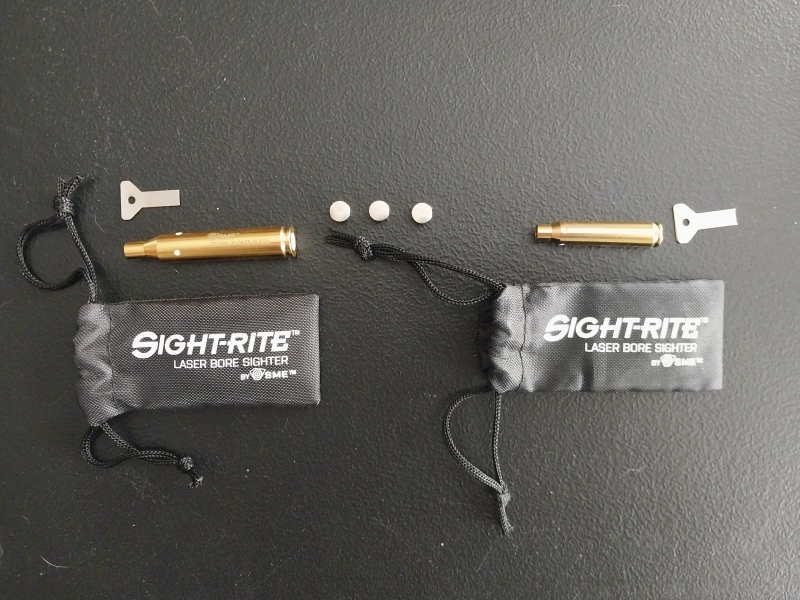
Traditional Rifle Bore Sighting
Bore sighting kits aren’t hard to find, but you need to have the right setup. Ideally, you need about 25 yards of space, plus a gun vise with which to hold your rifle steady. After setting your target, remove the bolt. At this point, you have to look down the barrel using the old Mark I Eyeball, while adjusting the optic. I’ve never been good at that, especially since neither of my Mark Is has ever been especially sharp. I spent a lot of time moving back and forth, and it was tedious. Especially at the public gun range where I used to shoot.
Laser Bore Sighting a Rifle
So, a couple of years ago, I decided to try a laser bore sighter. In fact, I tried a few. Two particular things about the laser appealed to me. First, it saved me from squinting down the barrel. Once I had the bore sighter in the gun, all I had to do was walk the reticle in. Second, I could do it at home. All I needed was a stable base and about 30 feet. I know that you can also go the traditional route at shorter ranges, but, like sight radius, longer is better. I’ve found lasers, or certain lasers, to be more accurate at short range. I’ve also found that 30 feet is about the minimum for the laser, so keep that in mind.
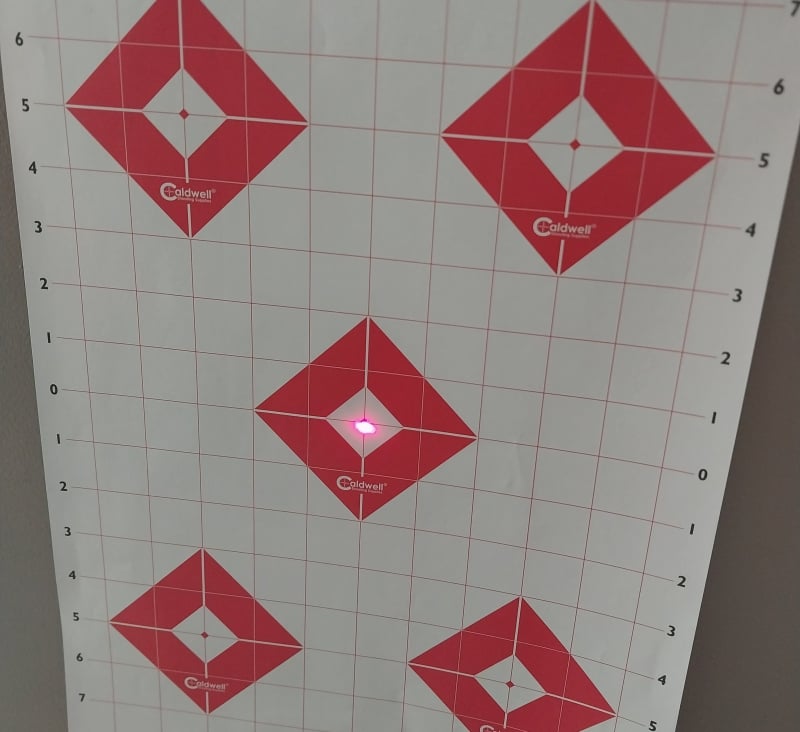
You can also use lasers at the range, but they can be hard to pick up in sunlight. A reflective target helps in that situation. But I prefer doing it at home and haven’t yet discovered a real advantage to not doing so.
Laser Bore Sighter Choices
There are two basic styles of laser bore sighter. The first, which I tried initially, is inserted in the muzzle. The one I had was “universal” and had spacers to ensure a tight fit for any caliber. It worked all right, though I found that rifles with muzzle brakes tended to be a bit less precise when sighted with that bore sighter. It’s better to put it right into the muzzle itself.
The other, which I have come to prefer, is shaped like a cartridge and inserts directly into the chamber. This avoids any “wobble,” as I sometimes experienced with the other bore sighter. The downside here is that you need multiple bore sighters for multiple calibers. On the plus side, however, the individual caliber bore sighters are less expensive and put me on target a bit more accurately than the first type. Perhaps it saves me a round or two at the range. Finally, the first type occasionally shifted ever so slightly out of its place, meaning I was constantly checking it. That’s not a problem when the laser rests in the rifle’s chamber.
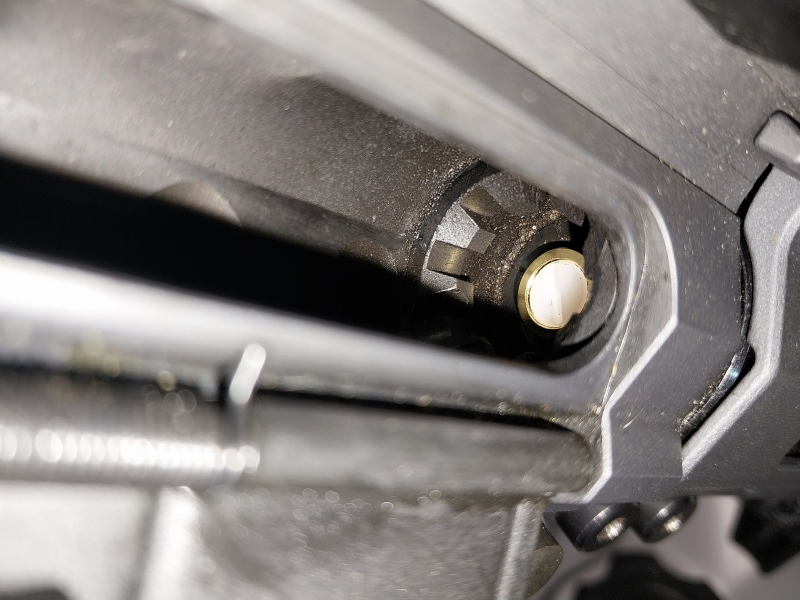
Sight-Rite Laser Bore Sighters
I currently use Sight-Rite laser bore sighters to get me on paper. They’re simple to use and I can dial in my optic in just a couple minutes. Here’s how it works:
- Set up your rifle on a stable surface, giving yourself 30 feet or so to set up your target. I use a portable Tipton Best Gun Vise, but I’ve also improvised, even using one of those AR-15 display stands that works with a magazine. That’s not as reliable but if that’s all you have, it’ll do in a pinch.
- Set Your Rifle at approximately the same height as your target. I’ve gone so far as to level my rifle, measure the reticle height, and measure the target bullseye. But honestly, I don’t fool with that anymore because it doesn’t seem to make much difference. Remember, all we’re doing is getting as close as possible. Final zeroing will be done with real ammo on the range.

Make certain you have a stable base. (Author’s Photo) - You either remove your rifle’s bolt or just open the action. Do whichever works best for you. With an AR-15, I just lock the bolt to the rear. I can’t do that with my AK, so I remove the bolt carrier. Hunting rifles vary. Do what works.
- The Sight-Rite bore sighter cartridges are activated by turning a plate on the “case head.” They each have a tool for that. Use it. Don’t just turn it with your fingers. Ask me how I know. Seriously, you could end up with tiny batteries bouncing all over the floor. Use the tool. This engages the batteries and activates the laser.
- Insert the laser cartridge into the chamber. Make sure it’s firmly seated to ensure accuracy. I nudge it into place with a small screwdriver, if necessary.
- Align the laser on your target. I used to move the target around to place the laser on the bullseye. I’ve since determined that it’s not necessary for me. Honestly, sometimes I don’t even use a target. Lining up the reticle on the laser is all that really matters. If you want to use inches to MOA, go right ahead. I stopped fooling with it and haven’t had any problems. Your mileage may vary but, for me, close enough is good enough with bore sighting. You can be as precise as you want to be, but I’m not quite so OCD at this stage.
- Looking through your optic, walk your reticle onto the laser point until they coincide as best you can see. I like to do elevation first, for reasons I will explain in a moment. If I have an illuminated reticle, I turn the brightness way up, so it doesn’t get lost in the laser. I stop when I can’t see the laser for the reticle. I then dial down the reticle’s illumination until I can see the laser again. I may or may not make a final small adjustment. That usually puts me very close to where I want to be. At that point, I just need to fine-tune it at the range. Keep in mind that different rifle setups will garner different results. Some may require more adjustment with real ammo than others.
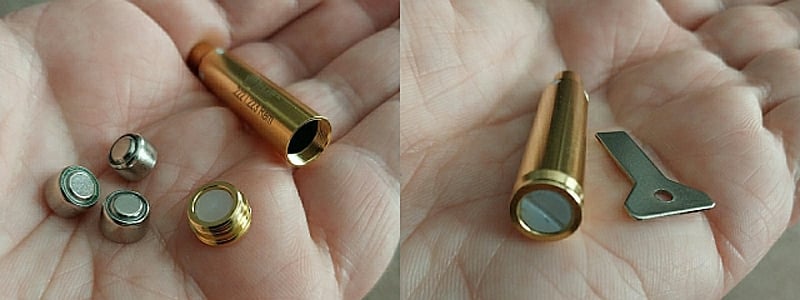
A Few Considerations
Again, you will need to do a final zero at the range. But this will get you fairly close, saving you time and ammo. I like to start at 50 yards at the range and go out from there if I desire. My ARs are zeroed at 50 yards so I don’t have to do anything else; my hunting rifles go further.
My one complaint about laser bore sighters is battery life. This hasn’t been unique to any brand I’ve tried. It’s either the same across the board or I’ve been singularly unlucky. But every single one I’ve tried seems to have an inconsistent battery life. Sometimes I get 30 or 40 minutes. Sometimes I get far less.
That’s why I align my elevation first. There have been times, with brand new batteries, where I’ve only gotten three or four minutes before the laser either cuts off or dims so significantly that it can’t be seen 30 feet away, even indoors. I’ve found that, once I get my elevation right, I can walk the reticle across to where it’s even with co-witnessed front sights and still be very close. If you don’t have front irons, make certain you have extra batteries. Fortunately, the batteries are inexpensive, and I buy ten-packs for $5 or $6. One thing I like about the Sight-Rite bore sighters is it’s easy to change the batteries, unlike some others I’ve tried.
I admit to getting frustrated when the batteries go belly-up, but it’s still much better than wasting ammo at the range. Those little batteries are a lot cheaper than real rounds.
A Useful Product
The Sight-Rite bore sighters come with little drawstring pouches in which to keep the laser cartridge and the tool that comes with each. I have a drawer dedicated to optics tools and accessories and they just live there. They’re quite convenient and I have them for rifle and pistol. Some are good for multiple calibers. For instance, I have one cartridge that works with my .270 Winchester and .30-06 rifles. If I had a .25-06 it would work with that one too. There’s another one that works with .308, .243, and 7mm-08.
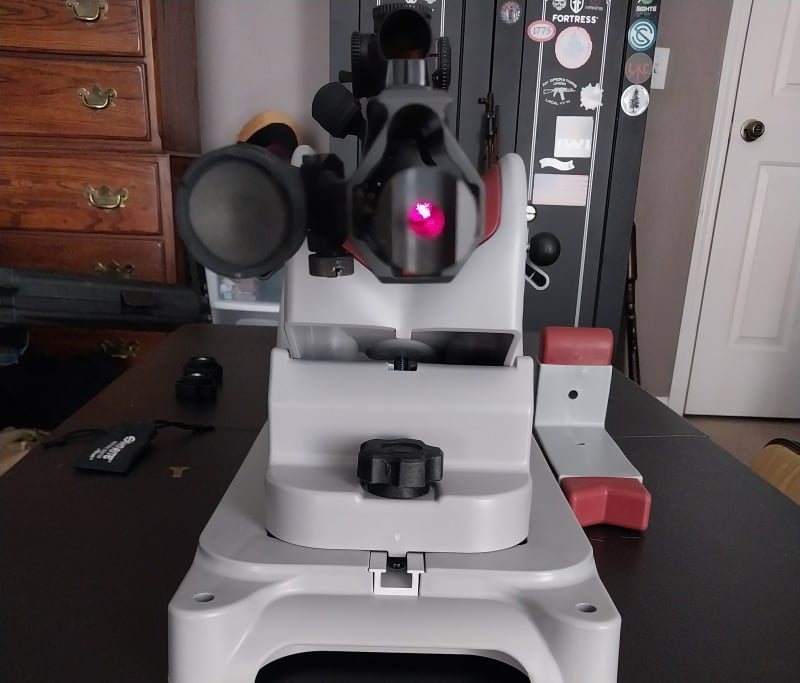
Despite battery frustrations, I like these Sight-Rite bore sighters. They’re easy to use and put me where I want to be before I even go to the range. My favorite gun store will bore sight guns for me, but that means I have to drive over there and wait for them to have time to do it. This way, I just set up, bounce the laser off the wall, and dial it in. It takes maybe five minutes. Just remember that bore sighting is not a substitute for zeroing with real ammo. It just makes that part easier.
If that sounds good to you, maybe give these bore sighters a try. If nothing else, they give you another excuse to monkey around with your guns and scopes. Like you really needed one.



